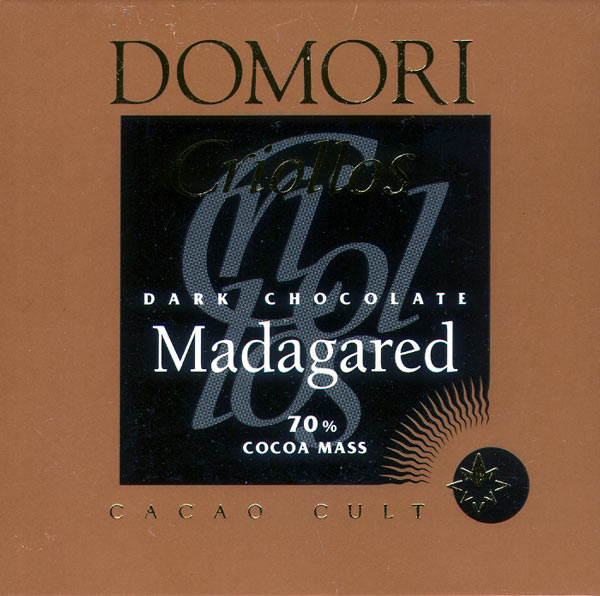
Impact
Bi-color companion to JavaBlond. That after its famous blonde beans, this because the source – Madagascar - is nicknamed ‘The Red Island’ thanks to laterite-rich soils reddened by iron oxides.
Before the disco ball of so many brightly lit Madagascars hit the market, dance halls there were ramshackle floors lit up in the night by a pair of VW headlights aimed at it, producing silver shadows writhing away to the Lizard King eloping out of his grave to sing lead on The Killers cover of ‘Shadowplay’. This is that bar. Domori just knocks it out.
Before the disco ball of so many brightly lit Madagascars hit the market, dance halls there were ramshackle floors lit up in the night by a pair of VW headlights aimed at it, producing silver shadows writhing away to the Lizard King eloping out of his grave to sing lead on The Killers cover of ‘Shadowplay’. This is that bar. Domori just knocks it out.
Appearance 4.6 / 5
| Color: | more rust than red; orange-tinted brown |
| Surface: | brush plate |
| Temper: | burnished |
| Snap: | tight; sound edge |
Aroma 9 / 10
rocks the nose off: deeper roast / darker tone than usual for Domori (fewer alcohol notes / less citrus typical of Madagascar); fired oak, clove, & vanilla; dates hover in light caramel cloud, punctuated by gorgeous raspberry / ylang; spells exhilaration
Mouthfeel 13.1 / 15
| Texture: | in keeping w/ divergent character - thicker, heavier body |
| Melt: | consistently smooth distribution |
Flavor 46.2 / 50
catches dates on the opening move... caramel honey -> roasted oak & cedar underneath -> spices loom on top (vanilla, clove, & nutmeg) -> killer raspberry w/ supple chocolate ‘n cream on its heels -> more spice ‘n wood (silver fir) -> jackfruit -> sparkling strawberry acids at the back laser a tingle-tang -> clears lightly-stringent gin
Quality 19.2 / 20
Select pick of the crop (Domori claims completely white cacáo kernels; Bertil Åkesson, the estate proprietor in Madagascar from where this cocoa comes, professes a willingness to test his trees’ DNA but a reluctance as of 2011 to actually act.)
Darker tone overall but lightness penetrates the weight. Unique for the origin, part of the emerging newer school, falling in between Marcolini’s failed version & shades of Guittard’s Ambanja, & vastly different from Domori’s own Sambiranos (70% & the 100% blister kit). Processed to a very even-keel as warmer roast brings out bolder nature while preserving acids for contrast.
Domori finally gets the island right, in part, because this seed stock shares some traits with his "home base" for sourcing cacáo -- Venezuela -- where he enjoys a joint venture with the Franceschi family at Hacienda San José.
Domori finally gets the island right, in part, because this seed stock shares some traits with his "home base" for sourcing cacáo -- Venezuela -- where he enjoys a joint venture with the Franceschi family at Hacienda San José.




